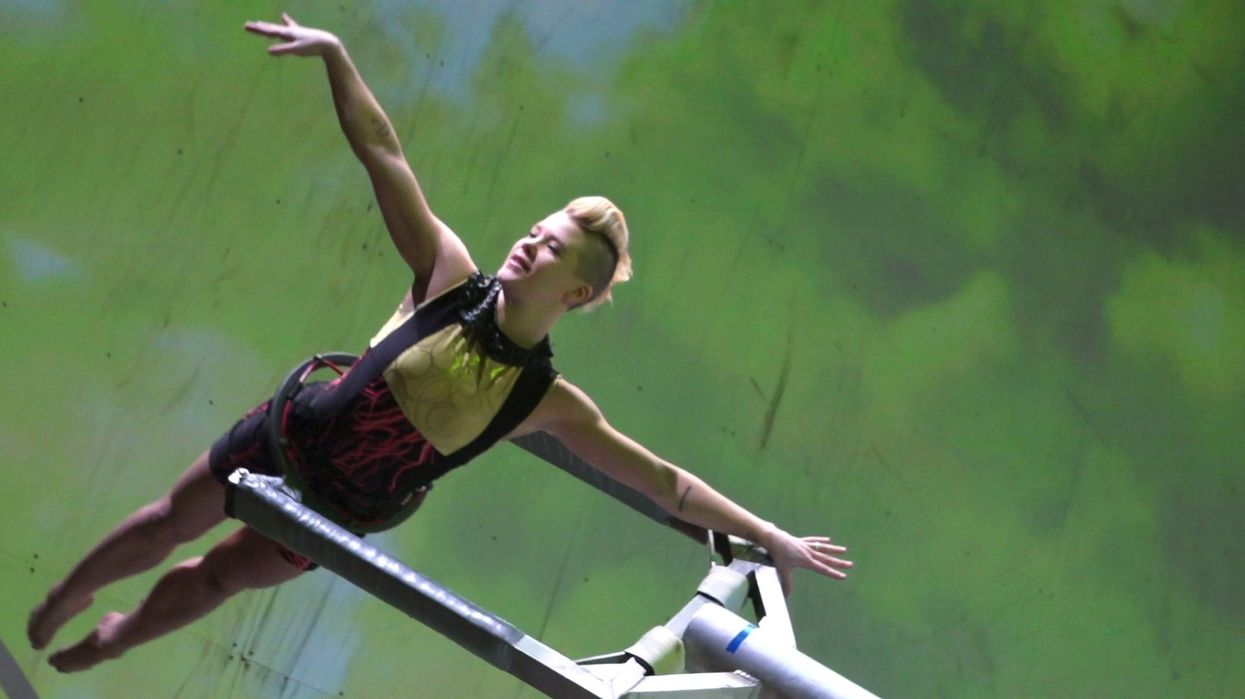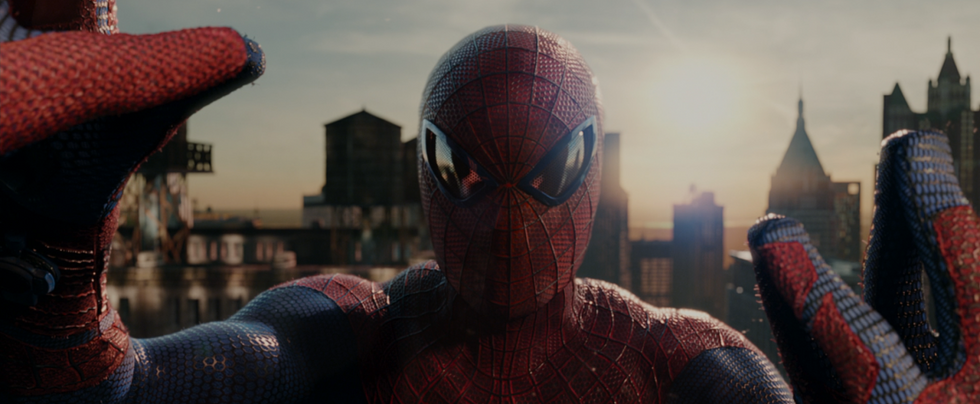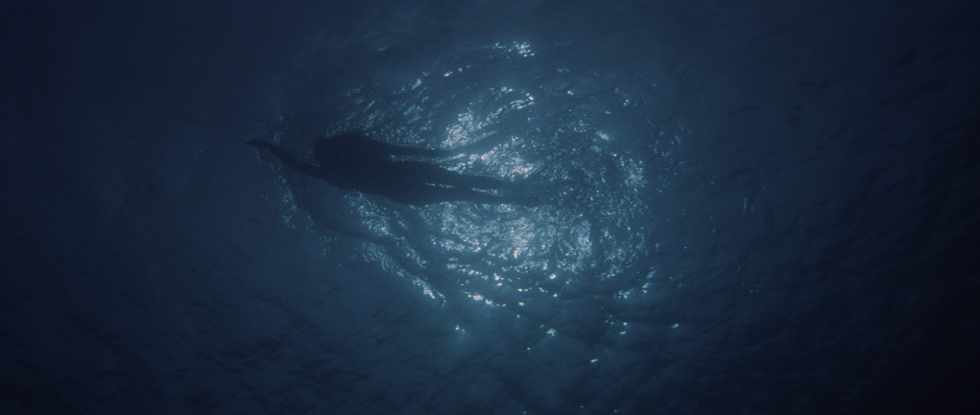Doc Filmmaker Catherine Gund Talks Vérité & New Ways of Telling Single-Person Stories
If you want to make a documentary about one person, what do you do? The industry standard -- if you can call it that -- would be to follow that person around, every waking moment. Catherine Gund, director of Born To Fly: Elizabeth Streb vs. Gravity, a documentary about the daredevil ringmaster and Evel Knievel of dance, says that's just one way to do it.

Gund takes a different approach: in order to understand the the woman behind dance-stunt-POPACTION performance art -- Elizabeth Streb -- the film follows seven members of the STREB Extreme Action Company that represent different aspects of her character. Armed with legendary cinematographer Albert Maysles and editor Alex Meillier, Gund crafts what the NY Times calls a "dazzled and breathless documentary" be recounting Streb's journey to make dance a contact sport.
Piecing together Elizabeth Streb's archives, vérité conversations with the members of the STREB Extreme Action Company, and an all-out one day multi-camera shoot of the London Cultural Olympiad, director Catherine Gund explores a handful of techniques to tell this story. Before you read the interview on her process, take a peak at the trailer for Born To Fly: Elizabeth Streb vs. Gravity:
NFS: We follow all these different characters -- Elizabeth Streb's dancers -- in Born to Fly . How did you decide who you were going to follow, and how they would shape the story?
Catherine Gund: It's a great question because it's counterintuitive to have so many characters in a documentary. It was certainly clear to me that Elizabeth was our primary character. But the way I convinced Alex Meillier, my editor, was that I told him the dancers were one. We treated all the current dancers as if they were a character, and the two former dancers were our third character. So the way I understood the dancers, the role of the dancers -- I knew they had to be in there, because we had to know why anyone would do this or nobody would ever connect to Elizabeth. They would just say, "Well I wouldn't do that. Those people must be crazy." Unless you're Elizabeth, it's too easy to say, "I'd never do it, I don't get it." And then there's nobody to help you understand, to try to empathize with that. So, what I proposed was that each of the characters of the dancers represent parts of Elizabeth. So each of the things they talk about in their particular thing is really as it relates to Elizabeth.

So you don't really get to know them as a fully formed person themselves, you just get to know the part that we want to bring out; the gracefulness that the ballerina, Jackie, has and her openness and willingness to do this incredibly gritty piece. Cassie's place in the kind of non-gendered space and a non-balletic, non-dancer body space and just tough, strong, confident, pure, beautiful, girl, boy, whatever. So there's that part of her. The fear, the risk and there's even, we don't end up getting so much from Felix but the kind of mad scientist. Felix, the dancer, has kind of a mad scientist quality, he's the one who runs the floor that's moving and he sits there and speeds it up. So, he's got that kind of mad scientist part of her. Then Sammy, just the totally pure emotion, getting out there and just breaking out and being so in the moment and so extreme and so full of energy. There's that side of her. So, we used them in the service of illuminating who Elizabeth is.

NFS: I know you had both Kirsten Johnson and the legendary Albert Maysles (Salesman, When We Were Kings) onboard as cinematographers?
CG: Sometimes, like in Elizabeth's studio, things just come together and the right dancers are there at the right time and Elizabeth's communications are reaching right into the heart and mind of the person she's trying to get to do things. I feel like that happened with this movie. We dropped the bowling ball, the next night I was out with Al Maysles, and he said, "What are you working on," and I said, "I think I'm going to make a movie about this person." And he's so curious and so interested in everything, and I think after about 2 minutes he said, "I want to go with you. I want to go to London. I want to film that, I want to see that, I want to be there."
I have these beautiful pictures of them in London. It was great. So he came. And that shoot, fifteen minutes or whatever of the film, was one day -- but was five cameras plus one additional that we licensed some footage from. So six cameras basically went, and they started at 5:30 and ended at 1:30. It was a long day and that's why the film was made so quickly, because we shot in one day what you might shoot over the course of three or four months.

NFS: So with all of this material you're capturing, how long did you spend putting the story and editing it all together?
CG: This was the fastest film I have ever made. It was one and a half years from beginning to end. From bowling ball to cast and crew screening was one and a half years. We edited for six months. Well, our editor had a baby on my birthday, so that was really a nice present. It wasn't a long break. Frankly, I wish I could have been sweet and given him six months of paid vacation, but I edited with the brilliant and amazing Alex Meillier. We didn't have to shoot that much because she has thirty years of archival footage. We did use a lot of the archival -- people feel like we did work on the film a lot longer. So it wasn't like we were just looking at the rehearsal right now, and the performances right now and Elizabeth living right now -- we really had the whole trajectory of her work, which was great. Again though, it could have gone in a million directions in the movie at any point, but what Alex, the editor, was able to do was to really stick with an arc that had to do with establishing what this brain and body is about -- showing the toll it takes on the practitioners including Elizabeth, the other dancers, what the risks really are of what we're doing and then getting us past that so that we can experience the triumph of London. He was really able to smooth that out and bring it out.

NFS: Nowadays, audiences are becoming more aware about this aesthetic of extreme action -- getting used to seeing a certain type of GoPro camera helmet and associating that with how you cover films about the "extreme." Born to Fly doesn't follow that convention. Can you talk about that?
CG: It's interesting that you say that because I was thinking about how, sort of, purist we are in a way. There's not a lot technology even pictured in the movie. There are no cell phones you ever see. You never see a cell phone in the whole movie. The other day, my teenage daughter said after the premiere, "You know you could have used a few more GoPros." And I thought it wasn't for lack of trying. It's obvious I think in your rock climbing film, it's obvious in these extreme things where no one else can be but the person who is doing it. I think there's some beautiful footage from the London Eye where Daniel the dancer has a GoPro on his head and he captures these beautiful images of being upside down over the river. But I think when I originally asked Elizabeth about using GoPros, she pointed out that they use their whole bodies and there's no way that they are going to fall with a GoPro on their head and it's just not going to work. There is kind of an organic purity to that they didn't invite a whole lot of implanting cameras. (laughs)
NFS: A lot of the film is figuring out what constitutes art. From your point of view as a filmmaker, what's the value of asking these questions and telling these stories?
CG: It was really clear to me that I wasn't just going to try to just put Elizabeth's show out on camera. That there was no point to that because you can't improve being at a Strep event in my opinion. So it had to be more about getting involved in the questions in a different way. So, I feel that in some ways we're similar which is why I think it has worked well for us to work together. She's making performance and I'm making film. I'm not making film of the performance. I feel like we collaborated as artists, we actually got a huge grant from the Warhol Foundation, which gave me a lot of confidence at an early moment that we were being recognized as two artists who were working together on a third project. That wasn't about documenting a piece and putting it out there. So when people say that they have this visceral experience, that's because we used her work in another medium, it's not because we documented her work. We're creating the same feelings in film, which I think is really hard to do. You watch a film about a dance, you're going to fall really flat and her work isn't dance, but if you just saw one of the pieces from a single camera on a tripod, you wouldn't get into the piece in the same way as if you could actually see it from different angles and hear it in different ways and hear things echoing more than they might. I did want it to be as multi-dimensional as the work is.
NFS: Do you have any advice you would give to artists and filmmakers starting out?
CG: Find characters you care about, so you can tell stories about strong characters that the audience will care about. It seems so obvious, but it's not how documentaries used to be made: take a character and use them to tell a bigger story. If you want to tell a thesis, or start with a thesis, I think writing essays is a better format.
---
Thank you, Catherine!
Here is the list of theatrical dates and venues in the US where you can catch Born To Fly: Elizabeth Streb vs. Gravity for yourself this month and next. Stay tuned via the official Born To Fly site for news on when you can see it elsewhere across the world.
What do you think are some interesting techniques to play with when telling a story about a single person?
Source: Born to Fly movie

 'The Amazing Spider-Man' (2012)
'The Amazing Spider-Man' (2012) 'Jaws' (1975)
'Jaws' (1975)









